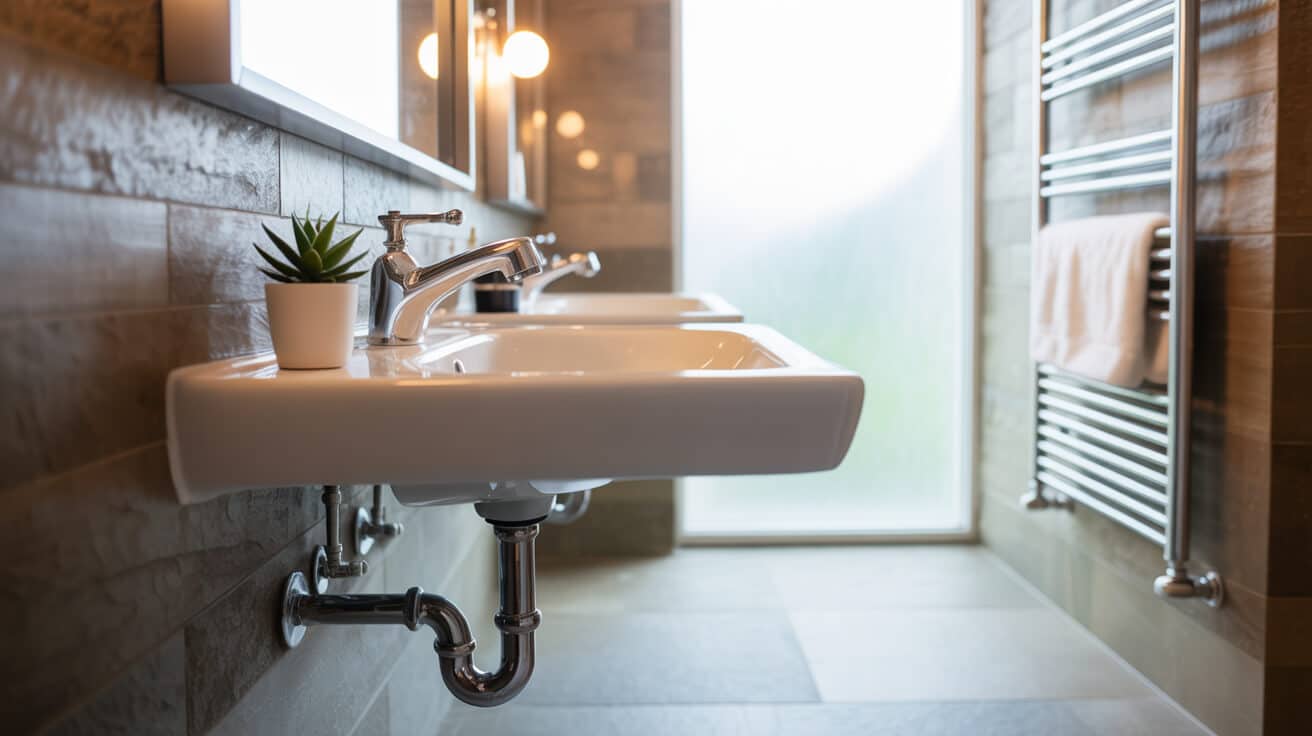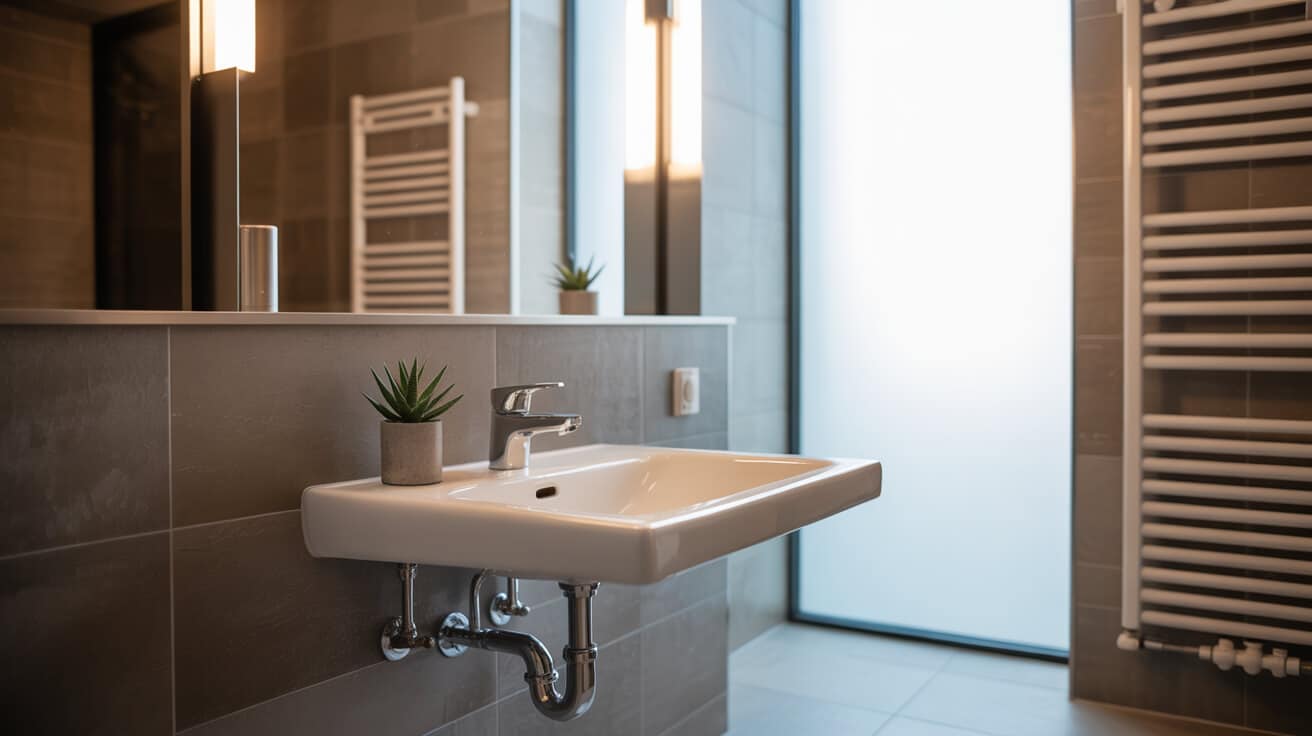A fully functional plumbing system operates silently in the background, yet its presence is deeply woven into everyday office experience. The network of pipes, fixtures, and controls enables seamless hydration, hygiene, and climate management while aligning with legal and environmental frameworks. When office plumbing works as intended, employees enjoy a sense of comfort and productivity that often goes unnoticed—until a disruption surfaces, rapidly refocusing your attention on the unseen systems that underpin workplace performance.
Within commercial environments, the sheer scale, high usage, and legal responsibilities set the bar for quality, oversight, and technological integration. The iterative maintenance, zoning, and documentation that offices require are both a liability shield for your company and a foundation for tenant satisfaction. As legal and cultural standards evolve, so too does the expectation of plumbing as a backbone of the modern workspace, reflecting both your operational priorities and your commitment to environmental and social good.
Lead
Modern office plumbing orchestrates the managed flow of water and waste, integrating mechanical systems, fixtures, and connected controls into a unified infrastructure. This system provides for employee well-being, ensures compliance with exacting building codes, and maintains the continuity of mission-critical operations. In an era of hybrid work, flexible floorplans, and variable occupancy, plumbing infrastructure must anticipate shifting needs, regulatory changes, and sustainability ambitions on behalf of your business or property.
The richness of office plumbing lies in its modularity, scalability, and capacity for zoning: enabling proactive maintenance and delivering accessibility without operational shutdowns. The legal responsibilities—ranging from water regulations to workplace health mandates—bind property owners, facilities teams, and service contractors in a shared network of accountability. In this environment, the expertise of a transparent, regulation-aligned provider, such as our team at Plumbers 4U, supports your company in maintaining optimal service standards.
Etymology and terminology
The word “plumbing” originates from the Latin word plumbum for lead, historically the primary material for pipes. Contemporary office plumbing, however, encompasses an ensemble of interconnected systems including water supply networks, sanitary fixtures, drainage, heating, and electronic controls. The language of commercial plumbing often includes terms such as:
- Sanitaryware: Encompassing office basins, toilets, urinals, and associated fittings
- Building services engineering: The multidisciplinary field that integrates plumbing with heating, cooling, and ventilation
- Fit-out: Installation of office infrastructure during construction or renovation
- Zoning: The practice of segmenting plumbing systems by area or function to facilitate targeted maintenance or risk management
Technical guides, local building codes, and maintenance documentation distinguish “commercial“ or “office plumbing” from domestic plumbing by referencing occupancy load, redundancy, pressure regulation, and compliance requirements.
Overview and context
Offices require plumbing systems tailored to dense populations, fluctuating demand, and the unique legal landscape of commercial property. Plumbing in these environments must satisfy not just basic sanitation but also regulatory, environmental, and wellness goals. Unlike domestic equivalents, office plumbing embraces scalable water delivery, smart fixtures, redundant heating loops, and robust drainage—each system built for continuous operation and minimal service interruption.
Office building types and water demands
- Single-occupancy offices: Centralised plantrooms supply all water and heating needs
- Multi-tenant buildings: Segmented risers and floor-level zones facilitate independent operation and billing per occupier
- Flexible and co-working spaces: Require modular, frequently adaptable plumbing with redundant controls
Comparison with other sectors
Commercial office plumbing typically exceeds domestic requirements in flow rates, fixture numbers, and documentation. Large meeting spaces, pantries, gym showers, and accessible washrooms drive up water use and diversity of fixtures. Compared to industrial settings, office plumbing is more focused on health, hygiene, and accessibility over process water or specialised waste.
Role in facilities management and property value
Effective plumbing design and maintenance protect the fabric of your estate and your company’s operational risk. Facilities managers leverage predictive maintenance, asset registers, and regular audits to maximise uptime and minimise the cost or impact of reactive repairs.
History
Origins and early developments
Early office plumbing mirrored residential arrangements—local supply, basic drainage, limited heating. The industrial revolution’s push for larger buildings introduced higher-capacity pipes, first municipal water mains, and collective restrooms.
Industrial emergence
With increased urbanisation, dedicated plantrooms, pressurised risers, and central heating became standard. Innovation proceeds hand-in-glove with evolving health codes: from early mandates for separate waste and potable lines to today’s sophisticated venting and backflow protections.
Code-driven standardisation and modern practice
The 20th and 21st centuries saw incremental standardisation through UK Building Regulations and the establishment of the Water Regulations Advisory Scheme (WRAS). Emergent trends include:
- Widespread adoption of solderless and plastic piping technologies
- Introduction of workplace hydronics and energy-efficiency mandates
- Growing adoption of documentation and testing protocols as compliance, not just best practice
Concept and description
Office plumbing systems form a distributed, modular web of supply and waste lines, heating conduits, storage tanks, pumps, and electronic controls. These systems provide targeted water delivery and sanitation at all functional nodes—washrooms, kitchens, mechanical rooms, and specialised workspaces.
Core principles
- Pressure management: Ensures even distribution from basement to upper floors while safeguarding against joint failure
- Flow optimization: Achieved through design sizing and proactive de-airing
- Zoning and redundancy: Division by floor or tenant simplifies isolation, upgrade, or repair
- Hygiene and backflow prevention: Regular flushing, device installation, and compliance audits as a legal and operational mandate
Integration of water, waste, and heating
Centralised or distributed heating systems (e.g., boilers, cylinders, point-of-use units) connect directly with water lines and controls. Waste systems integrate with energy and ventilation infrastructure, maintaining air quality and removing effluent under controlled gradients.
Differentiation from residential systems
Higher usage intensity prompts more durable materials, more frequent maintenance, and complex controls for scalability and compliance. Accessible, Doc M-standard washrooms and hygiene features such as touchless taps and automated flushing are typical.
Functionality, purpose, and applications
Office plumbing systems are designed to achieve a seamless flow of potable water, reliable drainage, and controlled heating to every required location. These aims reflect both practical and regulatory demands across diverse commercial environments.
Sanitation and hygiene
A functional restroom is a basic expectation of every modern office. Effective office plumbing assures hygiene through:
- Touchless or sensor-activated fixtures
- Anti-microbial finishes on sanitaryware
- Controlled temperature water supply for comfort and infection prevention
- Robust drainage to avoid odours or cross-contamination
Supply and amenities
Drinking water fountains, kitchen taps, canteen facilities, and staff showers draw from a common, regulated backbone. Efficient delivery depends on zoning, precise pressure controls, and ongoing system monitoring.
Heating and environmental controls
Plumbing supports office climate management via hydronic heating (radiators, underfloor), ensuring comfort, compliance with minimum temperature laws, and energy efficiency.
Infrastructure support and edge cases
Specialised departments or server rooms may require additional cooling, direct water feeds, or custom drainage—each task generating new requirements for integration, metering, and redundancy.
Classifications and variants
By occupancy and layout
- Single-tenant structures: Uniform, centralised architecture simplifies management but increases stakes for outages.
- Multi-tenant buildings: Segregated systems (vertical and horizontal zoning) support independent billing, targeted maintenance, and privacy.
By grade and build type
| Building Grade | Typical Features |
|---|---|
| Grade A | Advanced fixtures, wheelchair-accessible, smart tech |
| Grade B/C | Standard provisioning, base compliance, limited eco features |
| Retrofit | Use of liner systems, adaptive controls, remediation |
| New build | Clean-sheet design, maximum compliance, high efficiency |
Specialist environments
- Executive suites: Higher fixture specification, personalised controls
- Flexible workspace: Modular installations, high-usage resilience
- Accessible spaces: Doc M-compliant, hearing/vision support

Systems, tools, and methodologies
Water supply systems
Reliance on main risers, booster pumps, and pressure regulators ensures adequate and safe supply to all workspaces. Storage tanks are sized for the building’s maximum anticipated occupancy, with isolation points per zone or floor.
Drainage and waste
Soil, vent, and waste pipes must be routed for fall and access. Grease traps, anti-vacuum traps, and non-return valves support effective retention and prevention of backflow.
Control and monitoring
Advancements in sensor-based leak detection, temperature, and pressure monitoring have significantly improved your organisation’s ability to preempt problems. Asset registers and tagging support rigorous maintenance scheduling, legal compliance, and rapid diagnostics.
Installation and project phases
Implementation breaks into first fix (underfloor/behind-wall works; pipe runs) and second fix (fixtures, visible hardware). Each phase undergoes pressure and hygiene testing prior to sign-off.
Stakeholders and entities involved
Facilities managers
Coordinate preventive and reactive maintenance, manage compliance documentation, and mediate between your company’s requirements, tenants, and service providers such as Plumbers 4U.
Property owners and landlords
Bear responsibility for long-term asset performance, investment in upgrades, and adherence to statutory compliance.
Service providers and technical contractors
Certified installers are pivotal to correct deployment, issue diagnosis, and system adaptation. Service teams at Plumbers 4U engage transparently with clients, support asset registers, and ensure legal traceability.
Building occupants
Your staff, visitors, and service partners engage directly with plumbing systems and influence system longevity through use and reporting practices.
Legal, regulatory, and ethical considerations
Building standards
Parts G, H, L, and M of the Building Regulations define minimum standards for all key parameters: water safety, drainage, energy, and access.
Water safety certification
WRAS and related schemes enforce supply chain compliance, device traceability, and record-keeping within the water safety domain.
Health, hygiene, and accessibility
Routine risk assessments for Legionella and other pathogens are required. Compliance extends to documentation, contractor accreditation, and periodic testing. Accessibility standards (Equality Act, Doc M) guide layout, signage, and fixture choices, ensuring provision for all users.
Environmental ethics
Ethical operation considers system impact on water usage, energy intensity, and waste minimization. Management practices should reflect resource stewardship and workplace well-being as organisational priorities.
Performance metrics, data, and measurements
Water consumption and efficiency
Sub-metered consumption at riser or tenant level supports usage tracking, facilitating efficient leak tracing and allocation of costs for your organisation.
Reliability and uptime
Mean time between failures, maintenance backlog ratios, and incident logs reflect operational robustness.
Hygiene data and testing
Microbial analysis (e.g., Legionella) and assessment of residual disinfectant levels are standard; compliance logs and audit trails are legal requirements.
Response metrics
Maintenance contracts define response times for various fault classes, with penalties for exceeding time-to-fix windows.
Challenges, barriers, and limitations
Operational challenges
Outages or leaks risk reputational harm, financial loss, and breakdown of trust in facilities management. Your property faces challenges such as:
- Ageing infrastructure complicating retrofits
- Space constraints limiting system upgrades
- Balancing enhanced hygiene with system cost
New tenants, transparency culture, and sustainability reporting create shifting expectations. Facilities managers must balance cost with compliance risk and anticipate future legal changes.
Technical and design hurdles
Pressure zoning, smart fixture integration, and asset register maintenance all require specialised expertise. Regular re-certification and upskilling among service teams, supported by organisations such as Plumbers 4U, is now industry standard.
Impact, influence, and legacy
Well-designed plumbing influences:
- Employee well-being through reliable building services
- Lower insurance premiums and reduced downtime
- Long-term asset value and marketability
- Organisational reputation, especially in competitive office leasing markets
Legacy systems often require strategic upgrades or adaptive integration to maintain continuity. Forward-thinking planning can extend the usability and compliance profile of ageing assets, limiting long-term capital outlay.
Future directions, cultural relevance, and design discourse
Office plumbing is being revolutionised by:
- Environmental mandates driving adoption of ultra-low flow, smart metered, and adaptive zoning technologies
- Increasing workplace inclusivity, with universal design as standard
- Regulatory developments that require greater documentation, regular risk assessment, and performance evidence
- Cultural elevation of water and hygiene provision as essentials of organisational responsibility
Anticipating flexible work patterns, rising standards, and environmental scrutiny, facilities teams will continue to rely on highly attuned providers such as Plumbers 4U to adapt, monitor, and optimise systems, ensuring both the value of your company’s assets and the well-being of your organisation.

